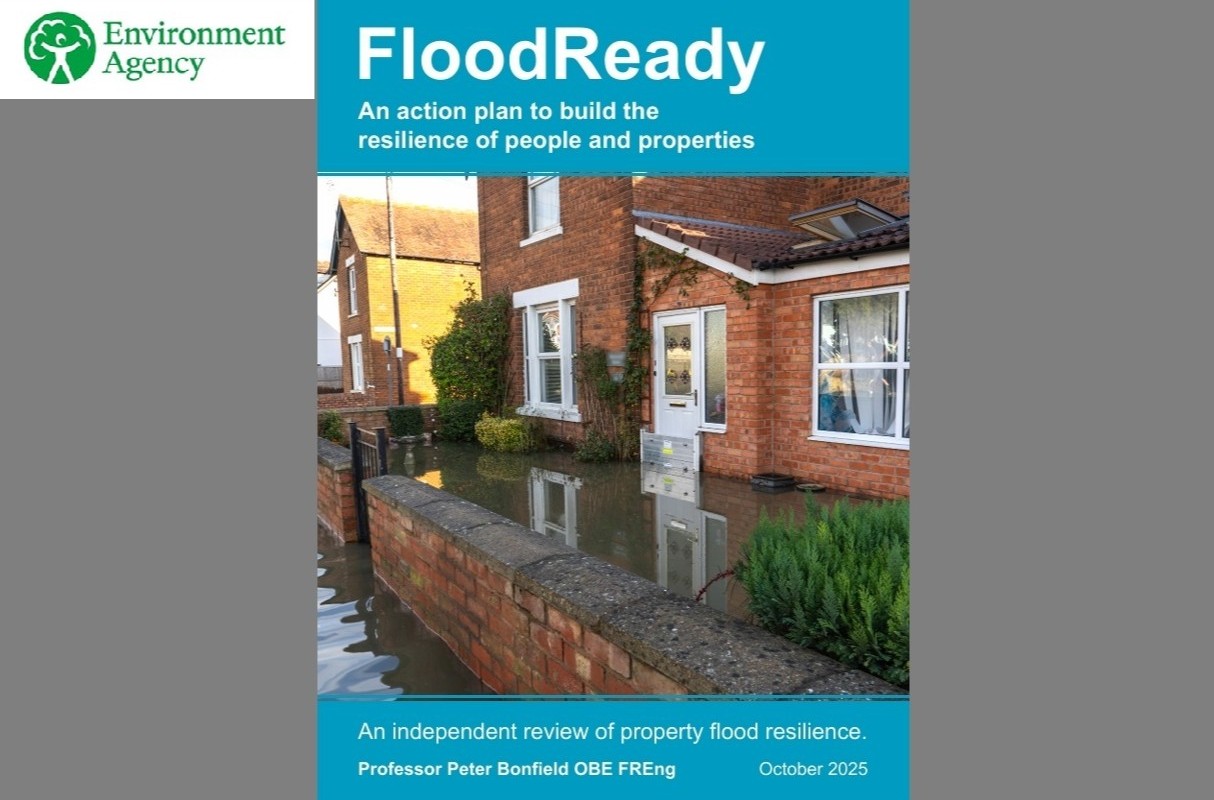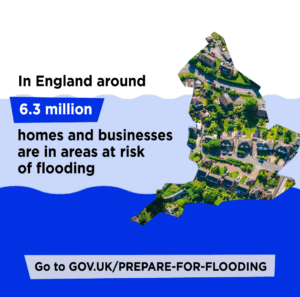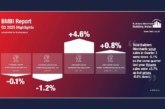
Featuring input from the Builders Merchants Federation, the FloodReady Review and Action Plan provides recommendations and practical steps to improve the take up of property flood resilience (PFR) measures.
Strong leadership from government, housebuilders, insurers and flood action groups as well as builders’ merchants and building materials manufacturers will be vital in ensuring homes across England are better protected from the impacts of flooding, according to an independent review published on Thursday 16 October. In recent years, there has been an increase in the use of property flood resilience measures, which help reduce the risk of damage to individual properties, speed up recovery and help people go back home after flooding. However, uptake remains still too low.
And with the latest Environment Agency data showing more than 6.3 million properties in England are now at risk of flooding, it’s vital that more homeowners explore these measures to avoid facing higher insurance premiums or reduced market value for their property.
Commissioned by the Environment Agency, Professor Peter Bonfield has published an independent review setting out how the nation can accelerate practical and affordable flood resilience measures for homes, while offering a clear roadmap for boosting resilience and helping people recover faster from floods.
“The misery that flooding causes is inevitably local – and therefore the response must be local. Local merchants can provide what’s needed for immediate relief – followed by pumps, dryers, dehumidifiers and other materials & products in the resulting clear-up.”
Brett Amphlett, Policy & Public Affairs at the Builders Merchants Federation
Property flood resilience measures – such as flood doors, non-return valves and air bricks – can help to keep as much water out of a property as possible. They also include measures like tiled floors and raised electrics, so if water does enter, it minimises damage and helps people get back on their feet quicker. The use of Sustainable Drainage Systems at property level, for example permeable paving and rain gardens, can also reduce the risk of surface water flooding.
The FloodReady Review is therefore said to build on progress made since the 2016 PFR Review and sets out a series of clear, practical recommendations to increase the use of resilience measures in homes and businesses at risk of flooding. Recommendations include investment being targeted to areas where PFR measures offer the greatest benefit and best value for money. It also calls on landlords to help protect their tenants by embedding PFR into housing improvements.
Furthermore, it also advocates for greater collaboration between local authorities and water companies to align investment plans and deliver resilience more effectively. These recommendations represent a forward-looking approach to tackling the growing challenge of flooding in a changing climate.
Professor Peter Bonfield, lead for the Flood Ready Review, said: “Flooding presents a significant and growing risk to people, properties and businesses. I was pleased to be invited to lead this independent review – FloodReady – of how we can better mainstream property flood resilience.
“FloodReady sets out how we can make flood resilience a normal part of how homes and businesses are built, maintained and repaired. It shows the power of partnership working between government, insurers, local authorities, and communities.”
Peter continued: “It is really heartening that the actions set out in FloodReady will now progress for delivery through the multi-sectoral Leadership Group, Property Flood Resilience Roundtable and others to make the actions a reality to help protect people and property.”
Serving as part of the Review team, Brett Amphlett, Policy & Public Affairs at the Builders Merchants Federation, said: “The misery that flooding causes is inevitably local – and therefore the response must be local – from flood risk managers, builders’ merchants and others. Local merchants can provide what’s needed for immediate relief – followed by pumps, dryers, dehumidifiers and other materials & products in the resulting clear-up.
“The BMF supports this Review and is promoting it to builders’ merchants and civils & drainage specialists in our supply chain – especially in districts prone to flooding.”
Brett noted that, as part of Flood Action Week (13-18 October), the BMF and its members are undertaken significant activity around the country to support & promote the issue with merchants and manufacturers including Fernco and Bradfords, Travis Perkins, Huws Gray, MP Moran and others staging in-branch promotions, breakfast mornings and more.
Outreach to local councillors and the fire & rescue services is a further element of the BMF contribution, whilst the body will also be extending its Flood Action Week activity for much of the second half of October to include, for example, a number of visits from constituency MPs to their local merchant to raise awareness and understanding.
Moreover, the BMF will be promoting the Action Pan contained in the Review to its builders’ merchant and civils & drainage specialist members, allowing them in turn to discuss the measures with their customers with the aim of growing the market for PFR materials, products and water management systems.











